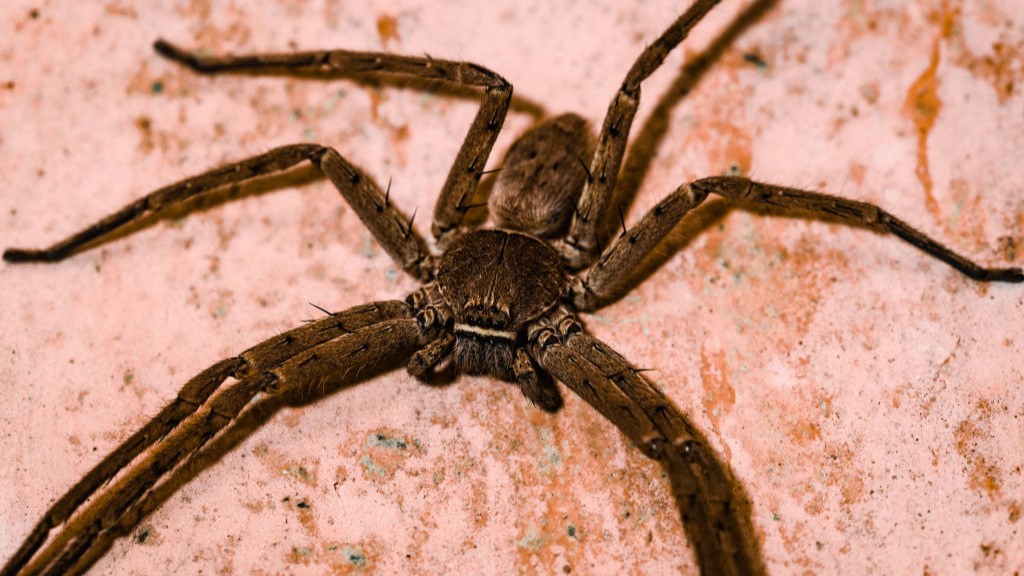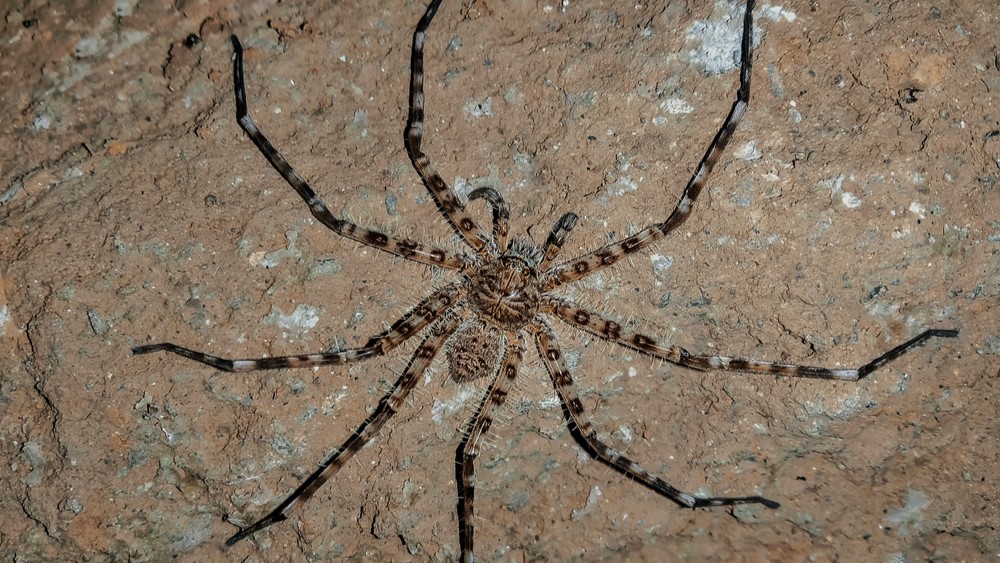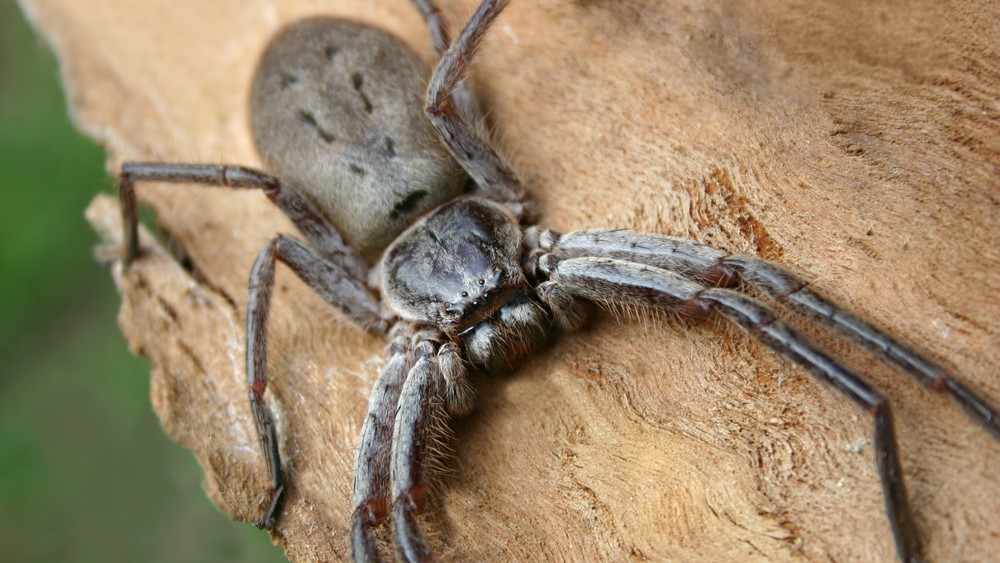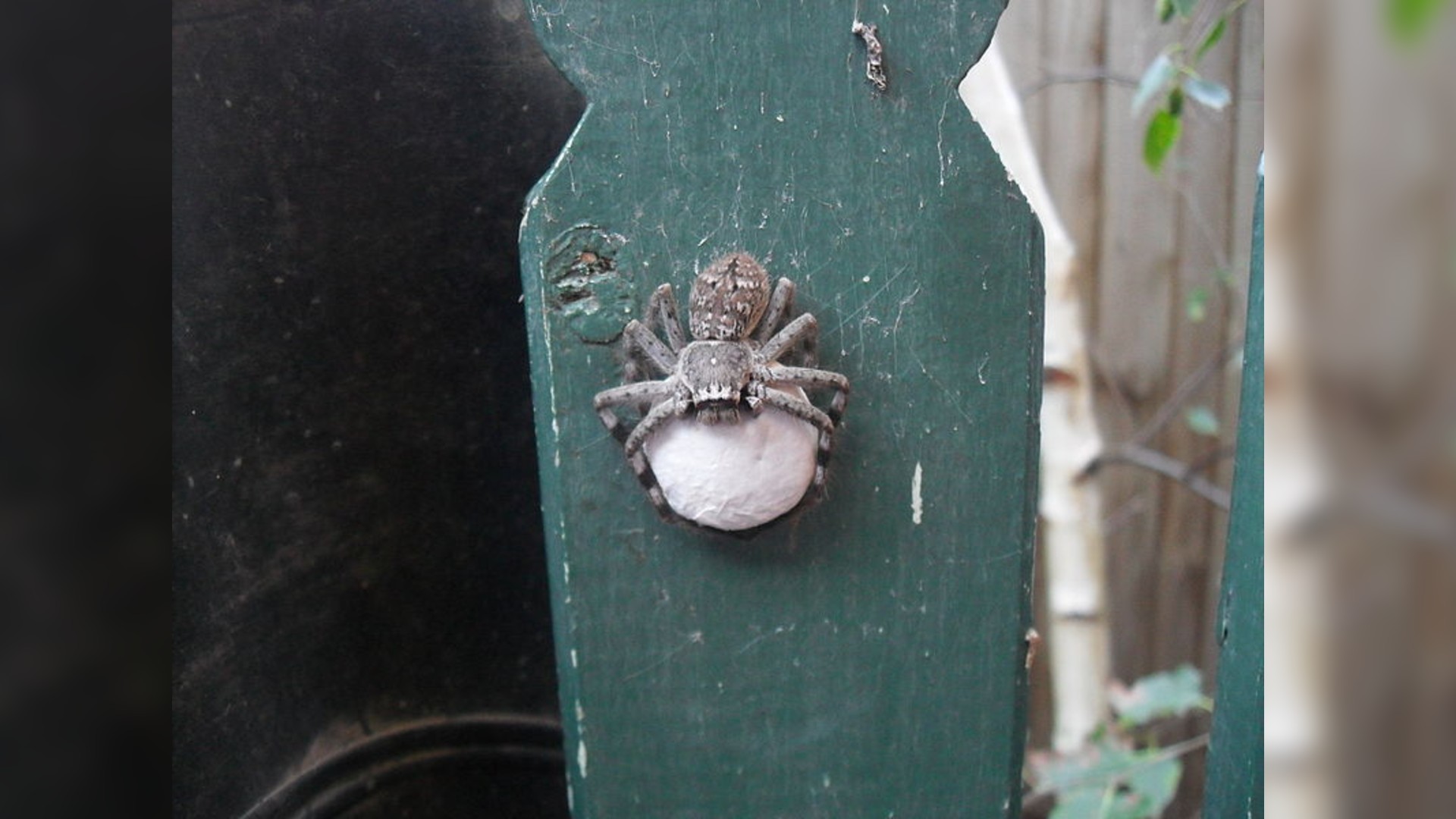Giant huntsman spider: The world's largest spider by leg span
Giant huntsman spiders are the largest member of the huntsman spider family Sparassidae with a leg span stretching up to 12 inches across — roughly the size of a dinner plate.

Huntsman spiders are a group of large spiders in the family Sparassidae, which comprises more than 1,300 species. They are found in warm climates across the globe and owe their name to the way they chase their prey.
Rather than building a web and waiting for a meal to come to them like many other spiders, huntsman spiders actively seek out and run after prey using their long, spindly legs. Once they catch their target, these speedy spiders inject it with an immobilizing venom and then chow down on it.
The giant huntsman spider (Heteropoda maxima) is the largest known huntsman spider in the world and the largest spider by diameter, according to a 2017 review article. Its body grows to 1.8 inches (4.6 centimeters) in size and it has a leg span of up to 11.8 inches (30 cm), dwarfing the average 1-inch (2.5 cm) body and 5-inch (12.7 cm) leg span of other huntsman spider species. While the giant huntsman spider steals the prize for the biggest leg span of any known spider, the goliath birdeater tarantula (Theraphosa blondi) is the heaviest on record, weighing up to six ounces (170 grams) — as much as a small puppy.
Related: What is the deadliest spider in the world?
The giant huntsman spider is elusive and thought to mostly dwell in caves. It was discovered in 2001 in Laos by arachnologist Peter Jäger, who heads the arachnology team at the Senckenberg Research Institute and Natural History Museum in Frankfurt, Germany. Since then, researchers have described other large huntsman spiders — including Cerbalus aravaensis, the largest known huntsman spider in the Middle East — but the giant huntsman spider still reigns supreme.
What do huntsman spiders look like?
Because of their size, huntsman spiders are sometimes incorrectly classified as tarantulas. One way to tell a huntsman from a tarantula is by the position of the creature's legs. While most spiders' legs bend vertically under their body, "huntsman spiders usually have legs that are splayed out to the sides, crablike," said Christy Bills, an entomologist and the invertebrate collections manager at the Natural History Museum of Utah. Because of this, huntsman spiders are also known as giant crab spiders.
Huntsman spiders' legs also have twisted joints that enable the appendages to extend forward, and their alignment enables the spider to move side to side, similar to a crab. Males have longer legs than females, although the latter have larger bodies. "Colors and patterns vary," Bills said, but the spiders' legs are typically gray or brown, and banded.
Get the world’s most fascinating discoveries delivered straight to your inbox.
Many huntsman spiders have flattened bodies to help them squeeze into tight cracks and holes, according to the Australian Museum.
Classification/taxonomy
According to the Integrated Taxonomic Information System (ITIS), the taxonomy of giant huntsman spiders is:
- Kingdom: Animalia
- Subkingdom: Bilateria
- Infrakingdom: Protostomia
- Superphylum: Ecdysozoa
- Phylum: Arthropoda
- Subphylum: Chelicerata
- Class: Arachnida
- Order: Araneae
- Family: Sparassidae
- Genus & species: Heteropoda maxima
Where are giant huntsman spiders found?
The giant huntsman was found in Laos, and most huntsman species are native to Asia. They are also prevalent in Africa, Australia and South America, according to Science Alert. They live in some warm American states such as Florida, California and Texas, and, according to the University of Florida, it is presumed that they were introduced from Asia. Folklore stories claim the spiders traveled from Asia in boxes of bananas, and because of that, they are sometimes called banana spiders.
Related: Brown recluse spiders: Facts, bites & symptoms
What environment do they live in?
Bills extolled the huntsman's speed: "They can often be quite large and very quick." In fact, the huntsman spider can move up to a yard (almost 1 meter) a second, she said. The spider typically lives under loose bark on trees, under rocks, in crevices and under foliage. Huntsman spiders, especially Australian species, are notorious for entering houses and cars. According to the Australian Museum, they have been "found hiding behind sun visors or running across the dashboard." These spiders can be social, and dozens will sometimes sit together on dead trees or stumps.
What do huntsman spiders eat?
The huntsman runs after or ambushes its prey, killing it with venom and strong mouthparts, called the chelicerae. Once captured, the prey will be injected with deadly venom from glands within the spider's body, according to the University of Florida. The huntsman can also be a valuable spider because it eats cockroaches, in addition to other spiders and domestic insect pests.
Are huntsman spiders dangerous?
Huntsman are not deadly to humans. According to the Australian Reptile Park, although huntsman spiders are venomous and their bites can be painful to humans, they do not cause anything more serious than mild nausea or headaches. Usually localized swelling and pain are the only symptoms of a huntsman spider bite.
In most instances, a huntsman spider will attempt to run away from a human, rather than biting them, according to the Australian Museum. However, the females of these spiders are more likely to bite when they perceive a threat to their young.
In the event that someone does get bitten, they should try to remain as calm as possible. This is to prevent their heart rate from increasing and spreading the venom more quickly around the body. Applying an ice pack can reduce the pain caused by the bite, but a pressure immobilisation bandage is not needed, according to Australia Wide First Aid.
How do huntsman reproduce?
Compared to other spider species that eat their mates, huntsman spiders are downright romantic. According to the Australian Museum, their mating ritual can last for several hours and involves lengthy caresses and other demonstrations of interest. The male drums his pedipalps — antennae-like appendages near the mouth — against tree trunks before inserting them into the female to fertilize her eggs.
After mating, the female lays up to 200 eggs and encases them in a large, oval, spun-silk sac. "Some huntsmans are dedicated mothers," Billa said. They "look after their egg sacs, guarding them fiercely."
Related: Why do spiders have 8 legs?
According to the University of Florida's Entomology and Nematology Department, some females carry the sac with them under their bodies, which severely restricts their movements. Others place the sac under a rock or piece of bark and stand over it, without eating, for up to three weeks. In both cases, females may become aggressive when guarding their egg sacs.
According to the Australian Reptile Park, at birthing time, the mother may tear the egg sac open to help her spiderlings emerge. She'll then stay with the babies for several weeks. Baby huntsmen are pale in color and darken with each molt. Huntsman spiders can live for more than two years.
Are huntsman spiders social creatures?
Sociality is rare in spiders, and huntsman spiders are no exception. Only five species are known to exhibit social behaviors, such as living in large family groups, according to a 2022 study. The social species include four huntsman spiders found in Australia — Delena cancerides (also known as the communal or social huntsman), D. lapidicola, D. melanochelis and D. spenceri — as well as an unidentified species from Madagascar in the genus Damastes.
Social huntsman spiders live in groups comprising a single mother and multiple clutches of babies. The offspring leave the family retreat after 5 to 12 months, depending on the species. Solitary huntsman spiders, on the other hand, do not form big groups and leave their mothers just a few weeks after they are born.
Additional resources
- Learn more about the giant huntsman at the Encyclopedia of Life.
- Here is a handy guide to identifying huntsman spiders and other arachnids
- Check out the World Spider Trait database for more information and research about spiders from around the world
Editor's note: This article was updated on May 22, 2024, to include new findings about the sociality of giant huntsman spiders.
Jessie Szalay is a contributing writer to FSR Magazine. Prior to writing for Live Science, she was an editor at Living Social. She holds an MFA in nonfiction writing from George Mason University and a bachelor's degree in sociology from Kenyon College.
- Sascha PareStaff writer




